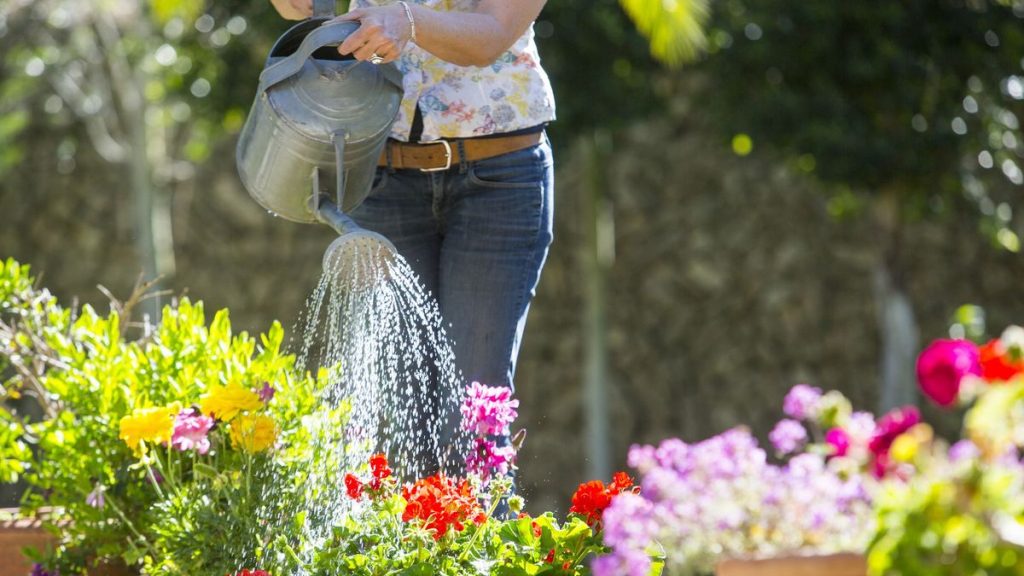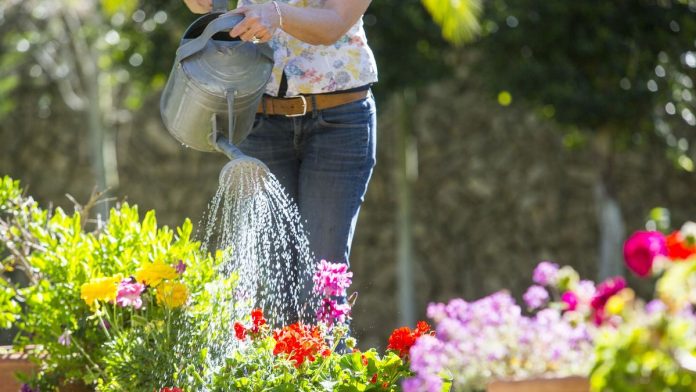If you are feeling like organic gardening is an overwhelming subject, then you are in the right place. When thinking about how to go about growing your garden, just remember that the more knowledge you have, the easier it should go when you’re forming strategies and implementing those strategies towards your gardening endeavors.
The fall season has arrived and the task of emptying our container gardens is at task. However, instead of storing your clay pots in a garden shed for the winter season, why not replace the summer annuals with edible fall vegetables. Having mums in your favorite clay pot signifies fall, however, consider adding alternative edible plants like leafy lettuces such as arugula, endive, bok choy and radicchio. When it is time for a quick salad, simply snip a few leaves, and you will instantly have delicious ready to eat salad.
A great gardening tip is to water your garden at night time. This ensures that the heat of the sun does not cause the water to evaporate, allowing for maximum absorption. This will help your plants get the appropriate amount of water they need in order to grow.

You need to be realistic about what your garden can and can’t produce. No matter how tempting a particular vegetable may be, if it’s not suitable for your climate, it’s not going to grow well. You’ll get more out of your garden if you focus on plants that are right for your area.
Collecting and preserving autumn leaves is a fun gardening project, especially for the kids. Generations of kids have used the “wax paper method” to preserve fall leaves at peak color – with a little help from Mom. Just select colorful thin leaves that don’t have a high water content and place them between two sheets of wax paper. Place a cloth – like an old tea towel – on top of the waxed paper “sandwich” and have Mom slowly run a hot iron (no steam) across the cloth. Peek underneath to see if the wax paper is melting and bear down hard to get a good seal. The wax paper may seem cloudy while it is warm, but it should dry clear as it cools. Enjoy your pretty display of colorful leaves!
Let your new seeds soak in a dark spot overnight. Soak the seeds by placing them in a container where they are covered with water. This will give your seeds a good start by making sure they have plenty of water, which they need to sprout. The seeds will have a better chance of surviving and maturing.
Make your own compost ahead of time rather than purchasing it. Adding compost to your garden gives your plants a needed boost to grow successfully. Begin saving your grass cuttings, raked up leaves, egg shells, and skin from fruits and vegetables in a sturdy bin 6 months prior to your gardening season. Your compost will then be ready to mix in with your dirt on planting day.
Bulbs produce beautiful flowers in your garden year after year. To achieve the most blooms, plant your bulbs as soon as temperatures in your area begin to cool in the fall. This is usually August in zones 1 to 4 and September in zones 4 to 7. Those in southern climates will have to chill their bulbs before planting.
Fall is the time of year to start planting those bulbs that produce the beautiful flowers that herald the beginning of spring. These types of spring flowers are easy to grow and can reward you with many years of gorgeous blooms. These bulbs need to be planted a few weeks before the first hard freeze in order to get their root system growing so they can survive the cold winter.
Abandon mass plantings to make your flower garden more personal. Mass plantings in every flowerbed have a tendency to make a landscape look like it belongs to a hotel or a corporate office building. Border plants and pockets of similar plants will give the same effect of a mass planting without being impersonal.
Make bloom-times overlap. Plant both early and late blooming plants next to each other, so that you have flowers all season long. Shallow-rooted annuals can be planted around deep-planted spring bulbs – when the bulbs die down, the annuals will just be coming into flower. For each season, choose one outstanding plant to serve as the key flower. Plant in drifts throughout the bed, and fill in with secondary flowers.
With all of the knowledge you just learned about gardening, you want to start forming plans and implementing those plans to the best of your ability. When it comes to gardening, you have to go outside and get yourself dirty, while you try out the strategies you have formed, when you do that you’re going to see what does and doesn’t work and from there, you can form new strategies.


